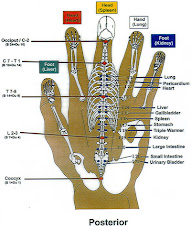click pix. to enlarge...

By Theodor Kriege
Compiled by Ivor Hughes
These two terms are not synonymous. Iris diagnosis is the observation and diagnosis of disease from the iris, and is sometimes referred to as Iriscopy. Eye-diagnosis is the observation and diagnosis of diseases affecting the whole eye, including the pupil and iris, and the immediately surrounding parts. Strictly speaking, this should be referred to as Ophthalmoscopy.
The observation of changes on, in, and around the eyes is very old. References to it are found in the works of Hippocrates, as also in the Medical School of Salerno, and in Philostratus. The first reference to it by a physician of more recent times is found in the work of Philippus Meyens. In his book Chiromatica medica, published in Dresden in 1670, he draws attention to the signs in the iris and their interpretation. His comments on iris diagnosis are here quoted for their historical significance:
The upper part represents the head. Since the stomach has a close relationship to it, then all diseases originating in the stomach are found in the eyes. The right side of the eyes shows the state of all organs inside the body which lie on the right side, such as the liver, the right thorax and the blood vessels. The left side of the eyes can show all organs which lie on the left side, therefore the heart, left thorax, spleen and small blood vessels. Conditions of health and disease arising from the heart are found here, especially weakness of the heart or fainting. . . .
The lowest part of the eyes represents the genitalia and also kidneys and bowels, from which colic, jaundice, stone, diseases of the gall and venereal diseases are to be found. These signs consist of vessels, weals and flecks. If the eyes have far too many lines and flecks they signily a state of unhealth in respect of the whole body. Red lines or flecks signify hot-bloodedness. White flecks indicate watery blood. . . . (Quoted from Herget aus Rossdorf)
Somewhat later the works of Johann Siegmund Eltzholtz appeared, in Nurnberg, 1695. In 1786, Christian Haertels published in Gottingen a dissertation under the title De oculo et signo (The eye and its signs).
Even though the significance of the eye was acknowledged in olden times, and special attention directed to it, nevertheless almost all these works refer even more to the Symptomatology. The complete examination, comprising inspection of the urine, diagnosis from the hand, nails and feces, assessment of hereditary taints, and diagnosis from the tongue, are neither taught nor acknowledged today in the technical colleges, with the exception of urine analysis where there is some acceptance. However, it is very important to remember that up to the beginning of the nineteenth century, such methods were an important part of orthodox medicine.
The true discoverer of Iris diagnosis in its present form was the Hungarian physician—Dr. Ignatz von Peczely (1822-1911). In the year 1881 he published the method in his work — Discoveries in the field of Natural Science and Medicine: Instruction in the study of Diagnosis from the Eye.
On the basis of several decades of comparative study, von Peczely taught that certain indications in the iris were to be related to organic diseases, and that from the localisation of such a sign conclusions could be drawn as to the disease of the corresponding organ.He developed an iris-topography in which every organ had its proper place. According to Peczely's iris-chart of 1881, the right half of the body is projected into the right iris, and the left side of the body into the left iris.
The head and thorax are shown correspondingly in the upper half of the iris; the arms, abdominal organs and legs in the lower half of the iris. Medially placed organs are localised in both irides.
The heart is shown in the left iris at 3 o'clock (15 mins). The whole area inside the iris-wreath is correlated with the gastro-intestinal tract, showing the ascending colon in the right iris, the transverse colon in both irides, and the descending colon (including sigmoid and ampulla) in the left iris. (Quoted from Herget)
In the year 1893, the Swedish pastor Liljequist brought out a work entitled Oin Oegendiagnosen. The book consisted of 284 pages, and an atlas with 258 monochrome and 12 coloured double-iris drawings. At first, he maintained that he developed eye-diagnosis independently from Peczely, and goes so far in the above work as to correct Peczely's statements.
From about the year 1887, the Tubingen ophthalmologist Schlegel supported Iris diagnosis. His book, The Eye-diagnosis of I. v. Peczely, was well known at that time. The names of others who were prominent at the turn of the century should be mentioned: Stiegele, Rapp, Wirtz, Zoepperitz.
However, these well-known names are superseded in significance by that of Pastor Felke (1856-1926), to whom the credit belongs for complete originality in this field. His eye-diagnosis, upon which he himself unfortunately never wrote, has been expounded by A. Miiller in a book, The Eye-diagnosis based upon the principles of Pastor Felke.
Even after his death, Felke influenced the development of Iris-diagnosis through his pupils, whose influence is still evident today. To this group belong H. Hense, as well as Frau Pastor Madaus and her daughter, Eva Flink, together with many other indirect pupils.
Many of these pupils have in their turn acquired student groups.
Other well-known authors and investigators should here be mentioned: Maubach, Dr. Schnabel and Thiel; Anderschou in England; Collins, Kritzer and Jensen in the U.S.A.; Vannier in France. The list may be concluded with the names of Angerer, Baumhauer, Deck, Kronenberger, Struck, Dr. Unger and Dr. Wermuth.
Much is still to be done, and many pages have yet to be added to the history of Irisdiagnosis.
~~REFLEX -POINTS ~ACUPRESSURE~~
1. EAR POINTS ,
2. HAND AND FOOT (Korea),
3. HAND PROJECTION,
4. RISCOPY ,
5. MERIDIANS,
_























No comments:
Post a Comment